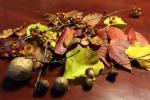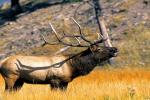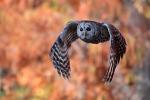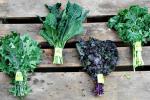Magazine
Seven autumn activities to do with your crafty kids
It wouldn’t be a real Appalachian autumn without watching children dive into a huge pile of fallen leaves. It’s a rite of passage, a way to tell time — you see who jumps right in, who wasn’t quite ready last year but now goes full-speed ahead, and who were master leaf-jumpers last year but might be a little too cool for it this year. But when the kids get tired of jumping, how do you keep them busy, and what do you do with all those leaves?
Fallen leaves provide natural fertilizer for your lawn and gardens.
One day, they’re brightening the horizon with their brilliant yellow, orange and red hues. The next day, they are covering your lawn in a crunchy brown carpet. Perhaps that’s why it’s called the “fall.” By mid-November, the leaves are mostly all on the ground, leaving the landscape barren, sleeping until its spring revival.
Seldom practiced today, it was an annual rite.
Back in the heritage days of yore, when family homesteaders worked the land in small, tight-knit communities, they held community hog-killing days. These Appalachian events were held between Thanksgiving and Christmas when the weather turned cold. Hog killing provided meat for the winter and served to bring the community together once more before snow made travel difficult, even to the next holler.
As the sport gained popularity, it inspired families to celebrate.
Part of the U.S. landscape for more than 100 years, football has gained more than a toehold in American culture at large and in Appalachian cities and towns. Appalachians cheer for teams from youth leagues, like the Tri-State Football League based in West Virginia, to the professional level, like the Carolina Panthers, Tennessee Titans or Atlanta Falcons.
If you think Appalachian bears are big animals, you haven’t seen anything yet. The grandest of all the mountains, the majestic elk, is the master of the mountains. Though their numbers have dwindled over the years, you still have a good chance of spotting an elk in the fall, when many leaf lookers take to the hills.
Simply Appalachian magazine celebrates “all things Appalachian” — which includes places to visit — throughout the southern Appalachian Mountains. Here is another in the series of destinations to see, share, savor, shop and stay.
Luray, Virginia
Appalachian owls are a mystifying breed.
When asked about owls, most people mention the easily recognizable soft cooing heard at dawn or dusk. Others describe the wide-open pair of golden yellow eyes the birds possess or their ability to turn their heads 180 degrees. But aside from nature shows, most people who live in or visit Appalachia won’t get to know these mysterious birds nearly as well as other animals.
Up until a few years ago, you didn’t hear much about kale. In fact, you might not have even recognized it. A leafy green plant, it looks kind of like spinach. Maybe you’ve seen it used as a garnish on fancy dishes at high-end restaurants. You’d have to be at least a little bit odd to actually eat the stuff… right?
But of late, kale has risen to the top of many healthy favorite food lists. Its powers are being hailed in foodie magazines, at restaurants and among food lovers all over the country. Why the sudden interest in kale?
- ‹ previous
- 3 of 21
- next ›








